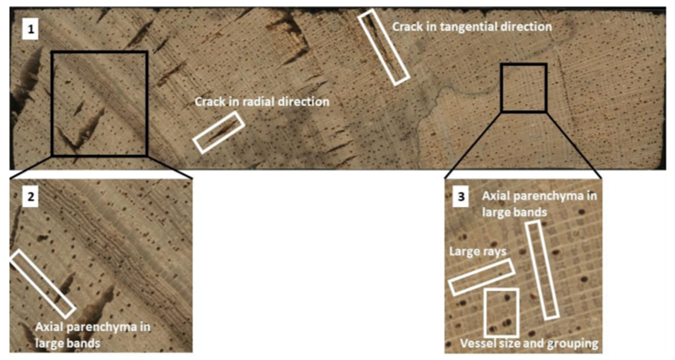SmartWoodID: Smart classification of Congolese timbers
SmartWoodID is a project funded by belspo through the BRAIN-be (Belgian Research Action through Interdisciplinary Networks) program.
A substantial part of the timber traded each year is still illegal. Logging illegally is the most profitable biodiversity crime. UN Environment estimates that illegal logging and the associated timber trade counts up from 50 to 152 billion USD per year. Illegal logging involves a high risk of irreversible damage to forests since it often involves overexploitation of highly sought after, sometimes protected, species. Timber regulations are already active (CITES, FLEGT, EUTR), but implementation and enforcement are a challenge. Currently, Belgium has the negative connotation of being the ‘hub of illegal timber trade’. 27.5% of the total imports of primary tropical timber products into the 28 countries of the European Union are imported via Belgium (mainly via the port of Antwerp). Wood identification is crucial in the enforcement process when it comes to verify whether the shipment corresponds with the products mentioned on the accompanying documents. For this reason, there is a growing demand for timber identification tools that can be applied by law enforcement officers. SmartwoodID aims at improving both identification success and speed by non-experts.

The project aims at automating part of the wood identification process by applying artificial intelligence techniques for the analysis of wood anatomical images of timber species of the Democratic Republic of the Congo. The tree flora of Central Africa comprises 3013 species, 27 of these belong to the class 1 commercial timber species of the DRC and are actually intensively logged and traded, 20 to class 2 (have potentially a big commercial value), 44 to class 3 (are considered to be promoted) and 879 to class 4 (commercial value is not yet known). The project uses xylarium samples of all the species of the four classes and takes advantage of the power of modern deep learning approaches. It also relies on expert wood anatomical descriptions which will serve as annotated training data to develop the software.
The tools, databases, and policy briefs developed in the framework of SmartWoodID will be featured on this website.
